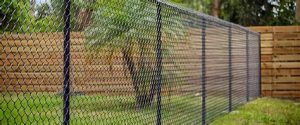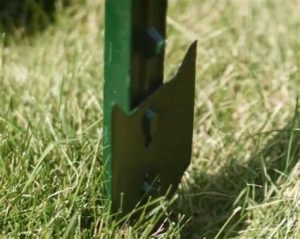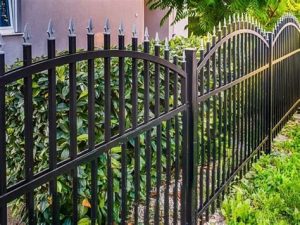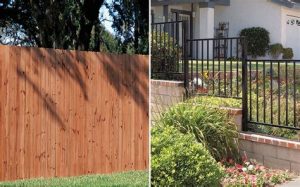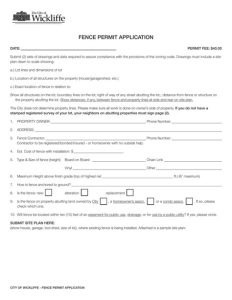Discover essential tips for overcoming winter challenges in construction, from selecting materials to enhancing durability and protecting against weather damage.When it comes to installing a fence during the winter months, many homeowners may hesitate due to the unique challenges posed by cold temperatures and inclement weather. However, with the right preparation and knowledge, winter fence installation can be a viable option that offers its own set of advantages. In this blog post, we will explore the specific hurdles you might face while installing a fence in winter and provide practical solutions to overcome them. From understanding the seasonal challenges and choosing suitable materials to adapting installation techniques and protecting against weather damage, we’ll cover everything you need for a successful winter project. We’ll also emphasize the importance of ensuring long-term durability so that your fence withstands not just the elements of winter but the tests of time as well. Let’s dive in and turn those chilly installation challenges into winter victories!
Understanding Winter Challenges
Installing a fence during the winter months presents unique challenges that can impact the overall success of the project. One of the primary issues is the frozen ground, which makes it difficult to dig post holes and secure the fence properly. Even with the right tools, the cold temperatures can hinder the installation process, requiring more time and effort than in warmer months.
Another challenge relates to material performance during the winter. Some fence materials can become brittle in low temperatures, leading to potential breakage during installation. It is essential to choose weather-resistant materials that can withstand the harsh conditions and avoid issues like deformation or cracking.
Additionally, snow and ice can create obstacles that may delay the installation process. Snow accumulation can hide property lines, making it difficult to accurately position the fence. Moreover, icy surfaces pose risks for crews working on installations, increasing the chance of accidents and injuries. Understanding these challenges can help fence installers devise strategies to effectively navigate winter installations.
Choosing the Right Materials
When it comes to winter fence installation, selecting the right materials is crucial for ensuring the fence’s integrity and performance throughout the cold months. In this season, materials are exposed to extreme conditions, including freezing temperatures and heavy snow, which can affect their durability and stability.
Among the various materials available, vinyl is often considered one of the best choices for winter installations. Its resistance to cracking and fading makes it ideal for harsh weather. Additionally, wood can also be used; however, it requires proper treatment and maintenance to withstand the cold. Protective coatings and weatherproofing can significantly enhance its lifespan, but they must be reapplied regularly.
Another popular option is metal fencing, such as aluminum or wrought iron, which tend to be robust and durable. These materials are less prone to the elements, making them a reliable choice for winter installations. However, ensure that they are appropriately coated to prevent rusting, which can occur with moisture exposure during winter.
In summary, choosing the appropriate materials for your winter fence installation will directly impact its performance and longevity. Weighing the pros and cons of each material will help you make a more informed decision tailored to your specific needs and climate.
Adapting Installation Techniques
When it comes to winter fence installation, adapting your installation techniques is crucial to overcome the unique challenges posed by cold weather conditions. Traditional installation methods may not be effective during winter months, so it’s essential to modify your approach to ensure that the fence remains sturdy and reliable.
One of the primary considerations is the condition of the ground. In winter, the ground can become frozen, making it difficult to dig post holes. To address this, consider using a post hole auger or a heated drill bit to penetrate the frozen soil. Alternatively, you can wait for a milder day to install your fence, allowing for easier digging and more stable footing.
Additionally, it’s important to choose the right fasteners and materials that can withstand lower temperatures. For instance, using corrosion-resistant hardware such as stainless steel bolts and screws will help prevent issues related to rust and wear over time. Furthermore, securing posts in concrete or using a technique called filling with gravel can provide better drainage and stability during freeze-thaw cycles.
Protecting Against Weather Damage
When it comes to winter fence installation, one of the most critical aspects to consider is protecting against weather damage. The harsh winter conditions can have a detrimental effect on your fence, leading to costly repairs or replacements. Therefore, taking proactive measures is essential to ensure the longevity of your fence.
- Choose the Right Materials: Opt for materials that are designed to withstand extreme temperatures and moisture. For example, vinyl and composite fences tend to perform better in winter conditions compared to traditional wood.
- Regular Maintenance: Before the winter months, inspect your fence for any potential issues. Look for loose boards, rust on metal features, or broken components that require repair. Ensuring everything is in top condition can prevent further deterioration.
- Apply Protective Coatings: Consider using sealants or protective paints that can help repel moisture and shield the fence from snow and ice. This is particularly important for wood fences, which can absorb water and expand or rot.
By implementing these strategies, you can significantly enhance your fence’s resilience against the winter elements.
Ensuring Long-Term Durability
When it comes to winter fence installation, ensuring long-term durability is crucial. Extreme cold, snow, and ice can wreak havoc on fences if they are not installed using the right techniques and materials. Therefore, understanding how to enhance the longevity of fencing is essential for homeowners and installers alike.
To begin with, selecting high-quality materials is paramount. Materials such as vinyl, aluminum, and treated wood can withstand harsh winter conditions better than other options. It’s advisable to check local building codes and recommendations for materials that are specifically designed to handle severe weather.
Additionally, integrating regular maintenance practices into your routine can significantly extend the life of your fence. This includes inspecting for any signs of damage or wear, cleaning off debris and snow buildup, and applying protective coatings as needed. Adopting these practices can help to ensure your fence remains not only aesthetically pleasing but also structurally sound against the elements.
| Maintenance Tip | Frequency |
|---|---|
| Inspect for Damage | At least twice a year |
| Clean Debris | After winter storms |
| Apply Protective Coatings | As recommended by manufacturer |
Frequently Asked Questions
What are some common challenges faced during winter fence installation?
Common challenges during winter fence installation include frozen ground, inclement weather, and the possibility of equipment malfunction due to cold temperatures.
How does frozen ground affect fence installation?
Frozen ground can make it difficult to dig post holes, leading to delays and the need for specialized tools or methods to penetrate the ice.
What precautions should be taken to ensure safety during winter fence installation?
Precautions include wearing appropriate winter gear, being cautious of ice hazards on the job site, and ensuring tools and machinery are functioning correctly in cold conditions.
Are there specific types of fencing materials that perform better in winter?
Yes, materials such as vinyl or aluminum tend to withstand cold weather better than wood, which can contract and become brittle in low temperatures.
How can weather conditions impact the quality of the installation?
Cold, windy, or snowy conditions can affect the curing time of concrete and the alignment of fence posts, potentially compromising the fence’s stability.
What methods can be used to install a fence in frozen ground?
Methods include using a post hole auger designed for frozen ground, warming up the area with a heat source, or waiting for a thaw if feasible.
What is the best time of day for winter fence installation?
The best time for winter installation is typically during the warmest part of the day, usually early afternoon when temperatures are slightly higher and the ground may be less frozen.
